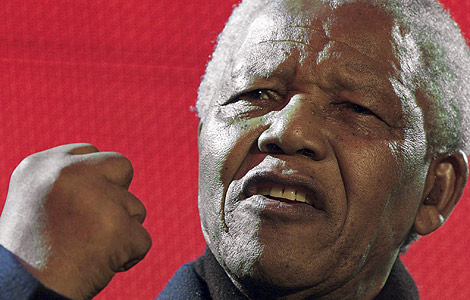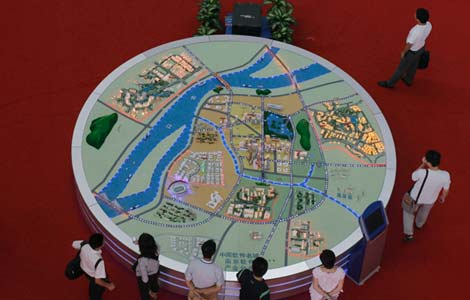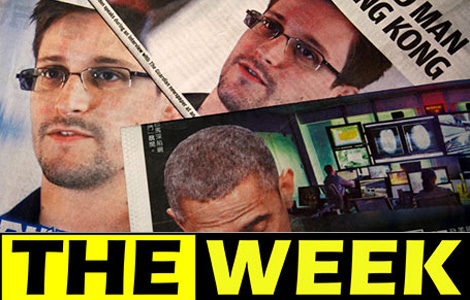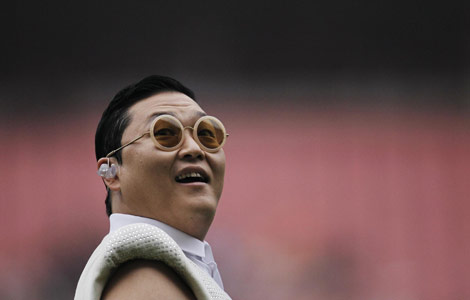On verge of a once-in-a-century change
Updated: 2013-06-24 07:15
By Dan Steinbock (China Daily)
|
||||||||
The National Security Agency's surveillance scandal is the first big test for Sino-US ties after presidents Barack Obama and Xi Jinping met in California early this month. Understandably, some Chinese observers already believe that cybersecurity is just the latest US tactic to try to contain China's rise. This security debacle underscores the need to restore strategic trust, which could be facilitated through US-Chinese cooperation in multipolar counterterrorism.
A power shift is in the making, and the cybersecurity issue can't stop this. In fact, the California summit between Xi and Obama heralds the transition from US hegemony to China's peaceful rise, which can be described as a once-in-a-century transition. This tradition will accelerate with the impending eclipse of the US Federal Reserve's quantitative easing.
On the eve of the California summit, Western observers compared it with the historic meeting between Chairman Mao Zedong and former US president Richard Nixon in 1972. But the comparison may not be appropriate.
When Nixon flew to Beijing, his goal was to contain Soviet expansionism. At that time, the size of the Chinese economy was only 20 percent that of the US and the Cold War was at its peak. Today, after three decades of reform and opening-up, the size of the Chinese economy is more than half of the US'. Economically, the two great powers are growing increasingly equal, and the Cold War is history.
In previous eras, the rise of new powers generated rivalries and conflicts. Some Western observers believe such frictions are inevitable during such epochs. Yet examples of such rising powers (Germany and Japan in the early 20th century) refer to countries where industrialization was overshadowed by the driving role of a strong military, when the international community was without adequate global governance mechanisms and the degree of global economic integration was low.
In contrast, China's industrialization has not been driven by the military. Global governance is improving as reforms in international multilateral organizations deepen. And global economic integration is more extensive today than any time in the past. As a result, Sino-US relations are at a "critical juncture" and what is needed is "a new type of great power relationship", as Xi has suggested. Tomorrow's Sino-US relationship must be predicated on today's nascent multipolar world.
Beijing and Washington both now see Sino-US ties as the most important bilateral relationship of the 21st century. In terms of security issues, China sees military modernization as a corollary of economic transformation, while the US sees it as a potential threat. While Beijing perceives the South China Sea as its core interest, maritime disputes have served to further Washington's "pivot" to Asia policy in the region.
In security matters, the issue of cyberattacks should be thoroughly re-assessed in light of recent revelations that US, through its National Security Agency, has for years engaged in widespread hacking inside China. Moreover, the case of the whistleblower Edward Snowden, a contractor for Booz Allen Hamilton, and the program PRISM, which allowed the NSA to monitor user data from the world's largest US-based Internet companies, raise troubling questions the privatization of national security. It created a highly adverse moral hazard in the Bush era and it casts a dark shadow over the Obama era as well.
As China moves higher up the productivity chain, the old points of friction between them over economic issues (currency policy, trade deficit and WTO commitments) have been overtaken by new ones (innovation policies and intellectual property rights).
Moreover, the impending economic and financial reforms announced by President Xi and Premier Li Keqiang are likely to support positive bilateral relations.
Washington's approach to bilateral talks is shaped by current conventional wisdom in the West, which perceives the US as recovering and China's growth as slowing down. But as the second half of the year will demonstrate, unipolar temptations are doomed to fail in the nascent multipolar world.
China's double-digit growth may be fading into history, but it continues to have solid growth potential for another 10 to 15 years, assuming the international environment remains relatively stable and peaceful. In the first quarter of this year, China's economy had a soft landing and is now on the way to recovery.
Despite substantial medium-term challenges, the short-term outlook will be supported by a wave of reforms that Premier Li laid out in early May, including investment projects, value-added tax reforms in the service sector, liberalization of interest and exchange rates, private capital investments, reforms in utilities, promotion of healthcare and social housing, and a comprehensive urbanization plan that includes reform of the hukou (household registration) system.
What about the short-term outlook in the US?
Despite recent market records, the Fed's bond holdings alone have almost tripled since March 2008. By the year-end, its securities holdings will reach $4 trillion. Besides, real GDP growth remains anemic.
As the Fed begins its unwinding process, moving too fast or too slow could severely disrupt the lingering recovery. US government debt has soared to more than $16.8 trillion, which is about $1.1 trillion more than its GDP. This means, the US will need a new debt ceiling around September.
In the early 1870s, the US, the largest emerging economy of the era, overtook the United Kingdom. Now, as the US' liquidity driven growth eclipses, the once-in-a-century transition of economic power will accelerate.
It is this complex and high-stake balancing act that Obama and Xi must manage in their respective countries and bilateral relations. And it is this transition that will make or break the multipolar 21st century.
The author is research director of international business at India, China and America Institute, a US-based independent think tank, and a visiting fellow at Shanghai Institutes for International Studies and Singapore's EU Centre.
(China Daily USA 06/24/2013 page12)
Most Viewed
Editor's Picks

|
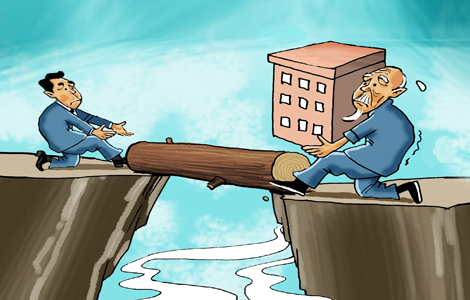
|

|

|

|

|
Today's Top News
H7N9 bird flu less deadly than H5N1
Snowden exposes more US hacking, then flies
China shares extend losses
Xi vows bigger stride in space exploration
Mandela's condition critical
Suspect in shooting spree detained
Mountaineers killed in Pakistan
Foreign firms eye new 'opening-up'
US Weekly

|

|


